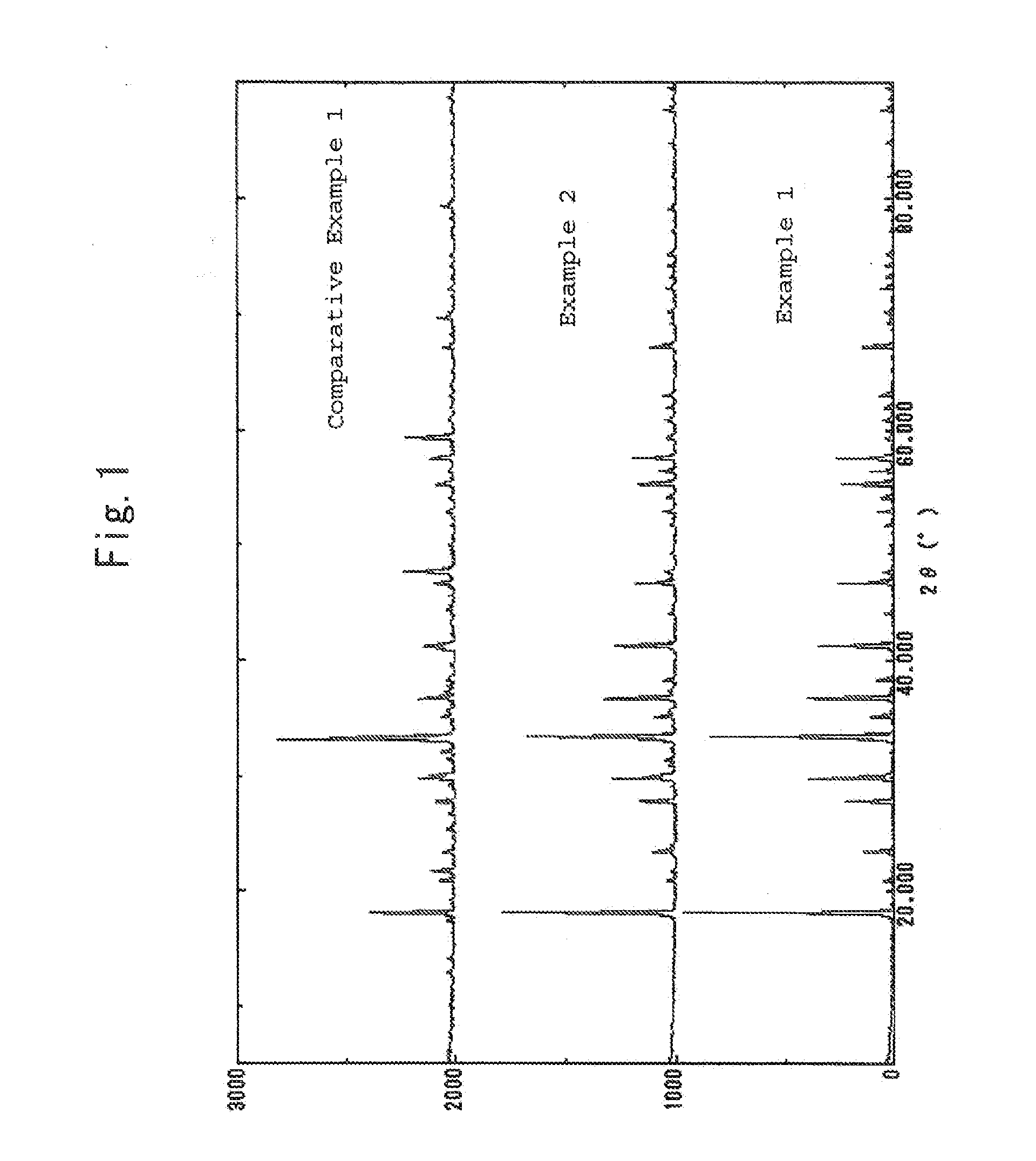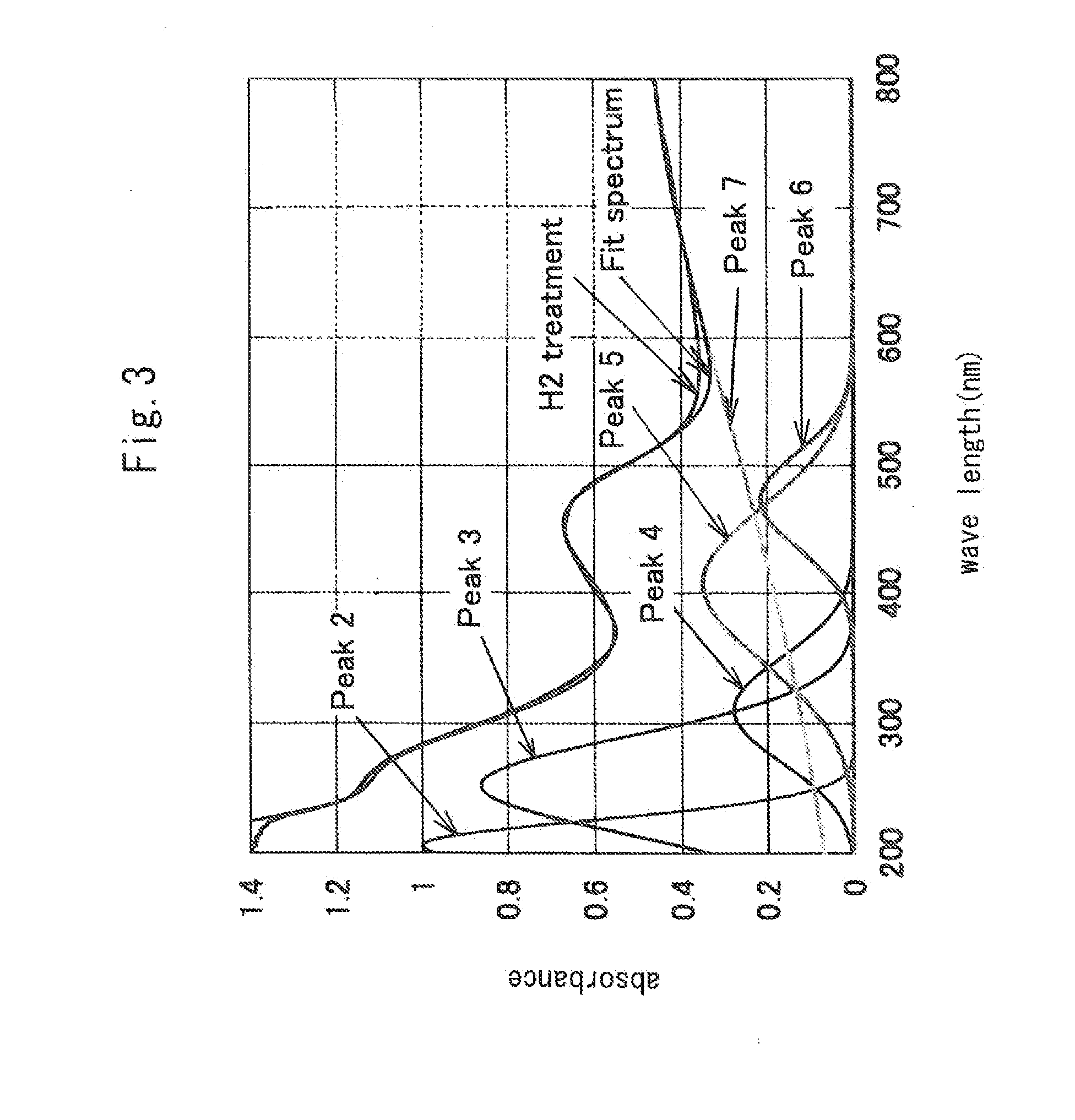Hydrogen production process
a technology of hydrogen production process and ammonia, which is applied in the field of hydrogen production process, can solve the problems of troublesome ammonia handling, and achieve the effects of convenient and convenient handling, clean source of energy, and convenient us
- Summary
- Abstract
- Description
- Claims
- Application Information
AI Technical Summary
Benefits of technology
Problems solved by technology
Method used
Image
Examples
example 1
i) Preparation of Katoite
[0027]First, 200 ml of ion-exchanged water was put into a reactor (separable flask) having a capacity of 1 liter. Next, 9 g of aluminum powder (trade name: #150, manufactured by MINALCO. LTD.) and 12 g of calcium hydroxide (manufactured by Wako Pure Chemical Industries Ltd.) were added to the reactor, followed by stirring. After completion of production of hydrogen gas, the ion-exchanged water was filtered, and a solid content obtained by the filtration was dried at a temperature of 70° C. in air. Katoite was thus obtained.
ii) Preparation of Hydrogen-Substituted Mayenite
[0028]The resultant katoite was calcined at a temperature of 1300° C. in a hydrogen atmosphere for 2 hours to produce hydrogen-substituted mayenite (Ca24Al28O644+.4H−) . A sample of the calcined product was subjected to X-ray diffraction measurement using an X-ray diffractometer, MaltiFlex, manufactured by Rigaku Corporation and subjected to measurement of a visible-UV reflectance spectrum us...
example 2
[0032]Hydrogen-substituted mayenite (Ca24Al28O644+.4H−) obtained by step ii) of Example 1 was irradiated with ultraviolet rays to obtain conductive mayenite (Ca24Al28O644+.4e−). The ultraviolet irradiation was conducted using a low pressure mercury lamp, with a distance from the lamp to a sample being 6.5 cm, with the irradiation time being 60 minutes.
[0033]Conducive mayenite was also subjected to measurement of X-ray diffraction and measurement of a visible-UV reflectance spectrum in the same manner as in step ii) of Example 1.
[0034]The measurement results of X-ray diffraction are shown in FIG. 1. As seen from FIG. 1, the sample showed peaks characteristic of mayenite, thereby being confirmed to have the structure of mayenite. FIG. 3 shows measurement results of the visible-UV reflectance spectrum. This sample shows a spectrum separated into three components having peaks at positions around 200, 250, and 310 nm, respectively. Compared to the sample of Comparative Example 1 describe...
PUM
 Login to View More
Login to View More Abstract
Description
Claims
Application Information
 Login to View More
Login to View More - R&D
- Intellectual Property
- Life Sciences
- Materials
- Tech Scout
- Unparalleled Data Quality
- Higher Quality Content
- 60% Fewer Hallucinations
Browse by: Latest US Patents, China's latest patents, Technical Efficacy Thesaurus, Application Domain, Technology Topic, Popular Technical Reports.
© 2025 PatSnap. All rights reserved.Legal|Privacy policy|Modern Slavery Act Transparency Statement|Sitemap|About US| Contact US: help@patsnap.com



